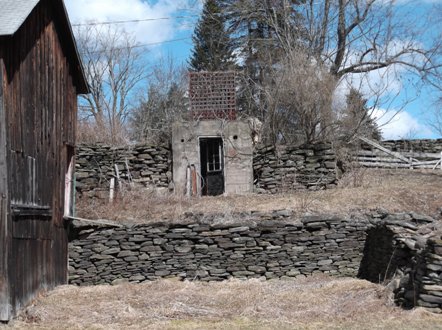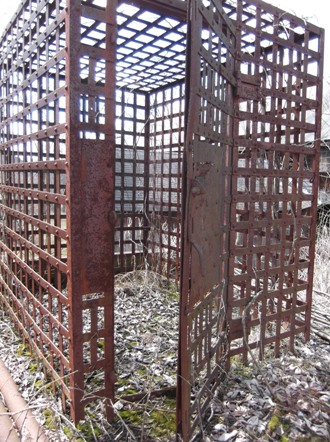There is a mystery in Dunraven: Why would an iron jail cell have been set atop a concrete bunker built into a stone retaining wall on the old Smith farm on New Kingston Road (now the Blue Deer Center)?
The cell was made by the E. T. Barnum Wire and Iron Works Company in Detroit, which made all kinds of ornamental and functional tems, from fences to fire escapes, park furniture to mausoleum doors. Apparently, they were famous for their lattice work jail cells (“Highest award received at World’s Fair for Jail Cells” the company boasted in a 1924 catalogue.)
Barnum made double decker or single cells, equipped with food openings or hinged bunks, forged of “tool proof steel.” “A secure lockup or jail will conserve morals and lessen crime in your community,” claimed the catalogue, which offered a list of customers, including the City of Oneonta, and the villages of Deposit, Schoharie and Tannersville. In 1902, these cells cost about $217.

But why would one have ended up on the Smith Farm in Dunraven? Maurice J. Smith settled the place in 1821 and ran a prosperous farm and mill there, leaving the property in 1890 to his son Olney, who turned it into a popular boarding house which operated through the mid-20th century. A jail cell isn’t exactly a tourist draw.
Was this cell ‘rescued’ from a town that was tearing down its jail? Was it used as secure storage for valuables, explosives, livestock? The bunker below cannot be accessed by the cell above, but it contains a toilet and sink, purportedly for use by farm workers.
Ideas, anyone?


